How Does Noise Cancelling Foam Work?
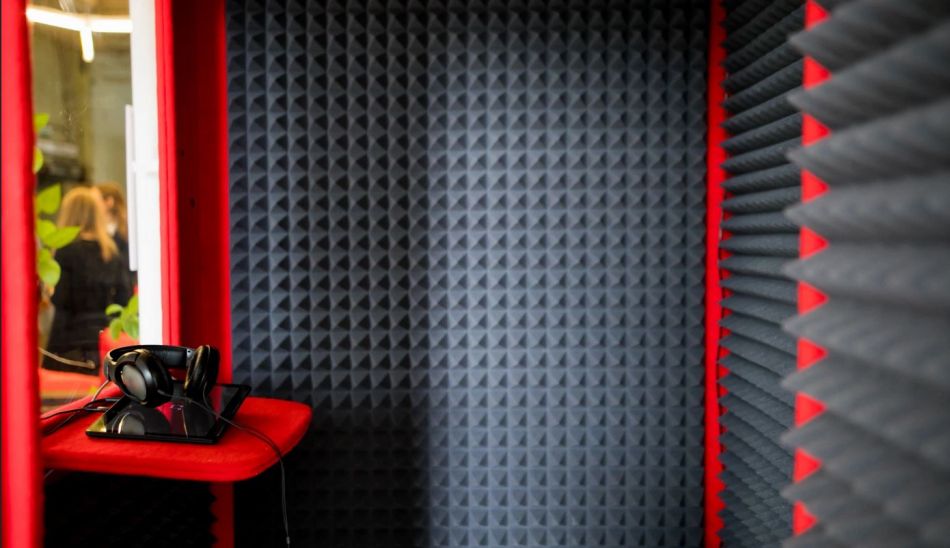
Most modern industrial and residential buildings are equipped with some soundproofing material. One of them is noise-canceling panels. Noise-canceling panels are often installed to reduce background noise in apartments, restaurants, and schools.
Although many have encountered these foams, many do not know how they work. Therefore, a lot of misinformation can appear that is not true. In this article, we’ll explain how noise-canceling foam works and how to get the best results. So, let’s start!
How Does Noise Cancelling Foam Work? Noise-canceling foam converts existing sound energy into heat, reducing soundwaves to bounce back into the space (room). This is possible due to its flexible cell structure that acts as a natural soundwave absorber, preventing noise from bouncing off hard surfaces like floors, ceilings, and walls.
The noise-canceling foam gives very good results in reducing noise and is used in many industries. Their installation is simple and can be applied almost anywhere. It also aesthetically fits into all types of interiors and can be purchased at an affordable price.
What Actually Is Noise-canceling Foam?
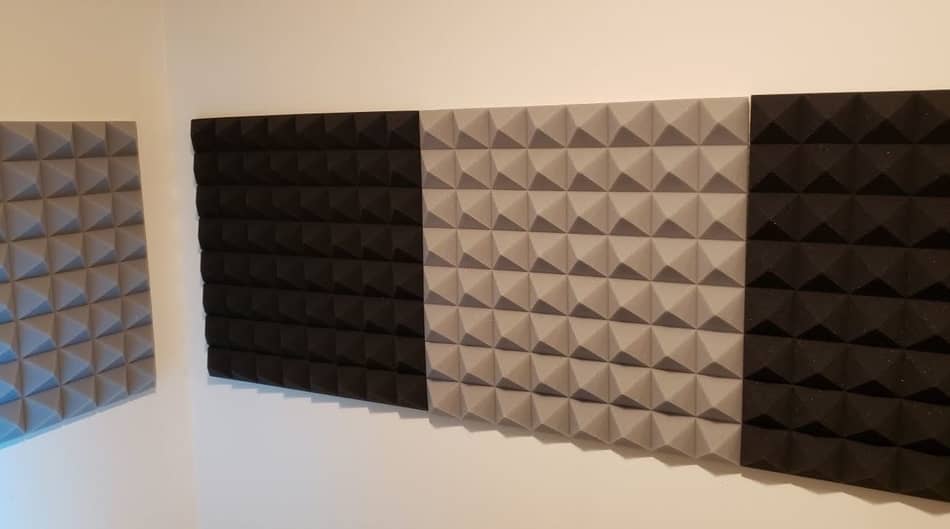
Noise-canceling foam is a material designed to absorb and reduce sound waves. Noise-canceling foam is very popular in the music industry and is used in studios to regulate or reduce noise. It typically comprises polyurethane foam to absorb sound vibrations and prevent echoes.
For example, if you visit large buildings, you’ll first notice that most ceilings and walls are coated with spongy noise-canceling foam. Auditoriums, halls, and arenas are especially susceptible to echoes because of their size and volume capacity.
> Buy Noise-Cancelling Foam HERE <
However, with the help of this foam, these rooms can be rendered echo-free, allowing everyone to hear sounds very clearly.
Keep in mind that noise-canceling foam cannot block sound. Instead, it absorbs vibrations that are caused by the sound wave. People outside the room will hear the sound from inside, but at a much lower volume than usual.
Related Article: What Is The Best Material That Absorbs Sound?
The Science of Sound
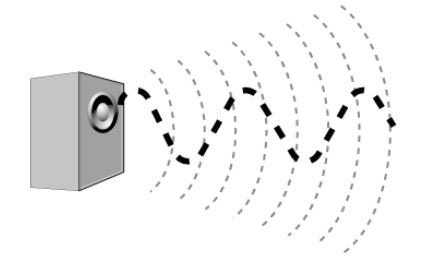
To reduce noise, you must first understand how it is created. A sound is a form of energy that manifests through vibrations. Whenever an object vibrates, it creates a chain reaction of vibrations in the surrounding air molecules, known as soundwaves. These soundwaves can travel long distances until they eventually contact the air inside our ears.
As scientists delved deeper into the nature of sound, they discovered that certain materials could modify the behavior of soundwaves. For instance, sound energy will easily bounce off hard surfaces, but the same energy may become muffled and distorted when met with softer materials.
If you want to learn more about how sound works, check out this video:
Absorbing Sound vs. Blocking Sound
To fully understand how noise-canceling foam works, it’s essential first to explain the terms between sound absorption and sound blocking. Although these terms are often used when discussing soundproofing, there is a huge difference between them.
Absorbing sound involves reducing the amount of sound energy reflected back into a room while blocking sound involves creating a physical barrier that stops sound waves from passing through.
Just as white objects can reflect light while black objects can easily absorb light, different materials react to sound differently. Depending on the noise-cancelling foam type, it can either block external sound or absorb internal sounds, decreasing reverberations within a room.
Therefore, it is essential to understand and know your needs to buy the right soundproofing material.
How Noise-Canceling Foam Works?
Sound Absorbing Foam
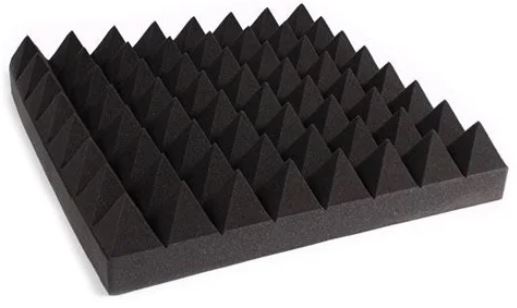
> Buy Sound Absorbing Foam HERE <
Sound-absorbing (noise-canceling) foams are designed to be lightweight and soft, primarily because of their unique open and flexible cell structure, allowing them to absorb sound waves naturally. This property effectively prevents noise from bouncing off hard surfaces such as floors, walls, and ceilings.
By converting sound energy into heat, sound-absorbing foams reduce the ability of soundwaves to reverberate back into a room, creating a more peaceful and comfortable environment that is free of distracting noise.
Also, sound-absorbing foam can improve acoustics in a room, depending on how it is used. For instance, recording studios often use visible foam tiles and wall panels to reduce echoes and create a more controlled acoustic environment.
Installing sound-absorbing foam makes creating an acoustically balanced space possible, making it more appropriate for listening and sound recording.
Related Article: Can You Soundproof A Room Without Damaging Walls?
When to install sound-absorbing foam?
To reduce sound within a room, softening the hard surfaces is necessary. When you clap your hands in closed spaces, you may notice that the sound echoes throughout the space.
One effective way to absorb sound in larger rooms is by installing acoustic tiles on surface areas, such as floors and ceilings.
This method is particularly useful for reducing airborne sounds and preventing echo in the room, creating a more acoustically balanced space. Doing this can reduce the noise level in a room and create a more comfortable and productive environment.
Sound Blocking Foam
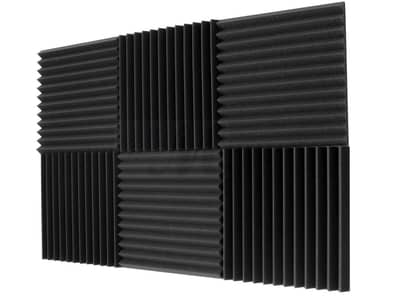
> Buy Sound Blocking Foam HERE <
Sound-blocking foam is specifically designed to prevent sound from traveling through walls. To achieve this requires materials that possess properties opposite to the lightweight and soft foam commonly found in recording studios.
Instead, foams with a denser and tighter cell structure are much better in sound-blocking applications. The increased thickness and density of the sound-blocking foam prevent the sound waves from through it, which reduces the amount of noise transmitted to the other side of the wall.
By using sound-blocking foam, you can effectively minimize the noise that enters or exits a particular space, creating a more peaceful and tranquil environment.
When to install sound-blocking foam?
If noise from adjoining parts of the building is causing you a problem, then soundproofing the walls and ceilings is necessary to prevent the sound from entering your space.
One effective solution is to install sound insulation foam within the wall construction. These foam panels are usually thick and heavy and are used between the walls to prevent sound from passing through the materials. While most types of acoustic foam can help reduce noise, these foams are specially designed for soundproofing and meet relevant industry standards.
The Future of Noise-Canceling Foam
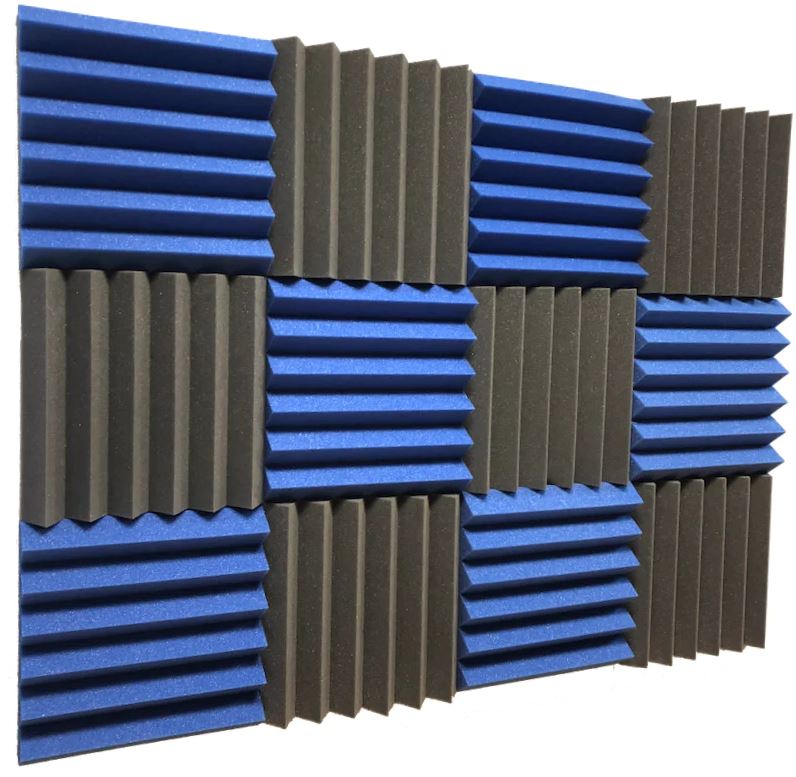
As soundproofing foam studies evolve, researchers are discovering new and fascinating developments. The Swiss Federal Institute of Technology in Zurich is working on concepts to create a new material that isolates vibrations, preventing them from passing through the foam.
This innovative substance, known as ‘super quiet soundproofing’, has the potential to significantly decrease the amount of material required to soundproof a space.
Even more exciting is that it may enable noise to move in only one direction – a groundbreaking feature that could transform how acoustic foam is utilized in domestic and commercial settings.
Can Noise-canceling Foam Completely Soundproof a Room?
To fully soundproof a room, the acoustic foam must absorb sound within the space and block external noise. Although this is technically feasible, finding the right material takes a lot of time.
Fortunately, many companies provide a vast array of soundproofing foams and tiles that are easily cut and shaped to fit your needs. Contact one of them and explore the most suitable soundproofing solution for your home.
To learn more can a noise-canceling (acoustic) foam soundproof a room, check out this video:
Where Can You Get Noise-canceling Foam?
For those who prefer more professional options, you can easily find noise-canceling foam on most e-commerce websites at reasonable prices. In addition, decorative noise-canceling foam can be purchased in soundproofing stores.
Your local hardware store is also an excellent place to find soundproofing materials for your home. For instance, if you only want to eliminate echoes in your room, you don’t have to cover your entire walls with foam. You can opt for small foam pieces to fit into corners where sound reflections are most prominent.
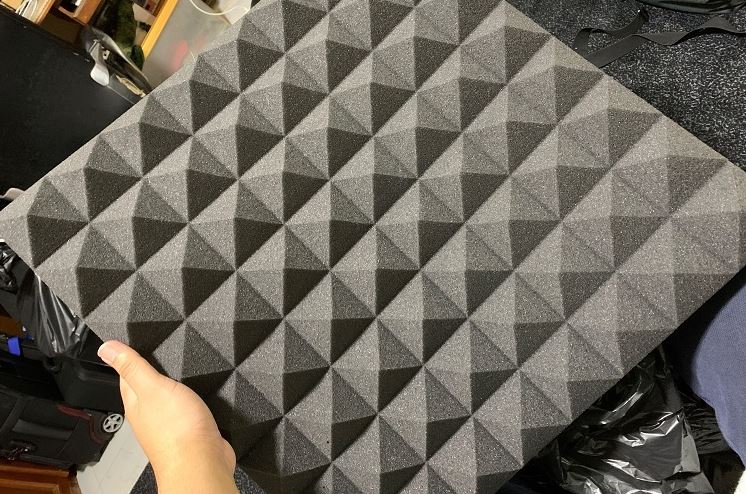
Wood Wool is worth checking out if you want more unique options than traditional acoustic foam. These cementitious wood-fiber panels offer excellent sound absorption properties and add an aesthetic touch to any room.
Related Article: How To Soundproof A Bedroom Wall Cheap? Explained
Final Thoughts
Noise-canceling foam is a great solution for reducing unwanted noise in rooms such as offices, homes, and studios. This type of foam works by absorbing sound waves and converting them into heat, effectively reducing the volume of the sound.
One of the key benefits of noise-canceling foam is its ease of installation. Unlike other soundproofing materials that require significant amounts of time and effort to install, noise-canceling foam can be cut to size and placed directly on the wall or ceiling.
In addition, noise-cancelling foam is relatively inexpensive compared to other soundproofing materials, making it an accessible solution for those who want to reduce environmental noise.
